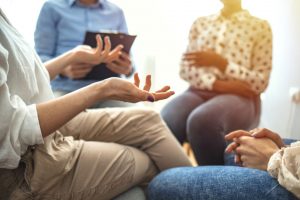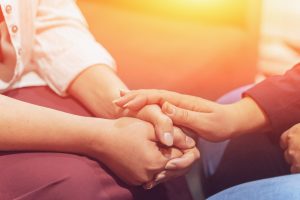
LGBTQ people may go through years of trauma. That trauma is not always outwardly visible, but instead may be part of an internal, lived experience. Today, young people are freer than ever to come out at an early age. Yet, that still may only be a possibility for a limited number of individuals. Even now, many people have years-long struggles with their identity.
The Formative Years
I first started to realize that I was “different” in seventh or eighth grade. My peers thought, often loudly, that homosexuality was wrong, that it was a punishment from God. As I went through high school, the HIV/AIDS crisis became national news. The message there was that if you were gay, you were going to die from HIV/AIDS.
To cope, I developed a false persona. It wasn’t intentional, it wasn’t fully conscious, but for ten years I lived a painful, false existence. Every morning when I woke up, I woke up in extreme fear of being found out for who I really was. So I quickly put on a mask and lived as my false self.
And for years, it worked! I was popular, hardworking, and got good grades. Yet, at the same time, I lived in terrible fear and pain. Every conversation I had with friends was premised on an elaborate lie. Every time a teenage friend objectified a woman, which some teenagers do all the time, my stomach churned as I pretended that I felt the same way.
Living True to Myself
Living with this false persona was exhausting. I spent a huge amount of energy on plans for how to keep the lie going, how to present myself as something that I knew I wasn’t. In my forties, long after I first came out, I learned that the pain of being in the closet was a major trauma. It formed who I was, what I did, and what I said for a long time.
Looking for relief, I turned to alcohol. The only thing that could calm my busy mind by keeping up the necessary, or so I thought, lies about my sexuality was alcohol. Eventually I had to drink every day to relieve my stress. Alcohol became a medication that I desperately needed.
The Habits Remained
By the time I came out, my drinking was already a full-blown problem. After years in the closet, I quickly settled into a bar and party scene that felt like freedom. I was finally free to be who I actually was. Yet coming out did not solve my struggles with alcohol.
There is as much LGBTQ community to be found in recovery as there is in active addiction. However, as I discovered when I got sober, recovery in the LGBTQ community is incredible. Every large city, and many smaller ones, have specific 12 Step meetings for LGBTQ people. Those meetings are often enjoyable and well-attended. The LGBTQ community is used to “sticking together” and helping each other out, and in recovery it’s no different.
I’ve found wonderful LGBTQ meetings wherever I’ve travelled. No matter where I am, I always enjoy checking into a “gay” meeting. I often tell straight people in recovery to seek out the LGBTQ meetings too, since they’re usually so much fun.
About Adam Banks
Adam Banks is a certified interventionist and the owner of Adam Banks Recovery. After receiving an MBA from the University of Chicago, Adam built a company acquired by United Health Care. His discipline and attention to detail comes from his former career as an airline pilot, holding an ATP, the FAA’s highest license.
Today, Adam is dedicated to helping others achieve long-term sobriety. His work has guided executives, pilots, and physicians on paths to recovery. Adam brings families together through a loving and inclusive approach.
Adam has authored four books on addiction. His recent work, Navigating Recovery Ground School: 12 Lessons to Help Families Navigate Recovery, educates families on the entire intervention process. He also offers a free video course for families considering an intervention for a loved one.
Adam is available for alcohol and drug intervention services in New York, Long Island, the Hamptons as well as nationally and internationally.




